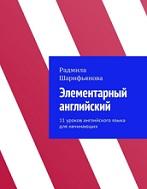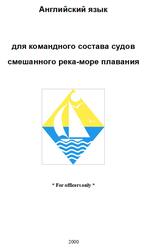This Official Guide has been created to help English language learners understand the TOEFL® test and prepare for it. By preparing for the test, you will also be building the skills you need to succeed in an academic setting and go anywhere in your career and in life.

APPLIED ARTS AND FINE ARTS.
Although we now tend to refer to the various crafts according to the materials used to construct them — clay, glass, wood, fiber, and metal — it was once common to think of crafts in terms of function, which led to their being known as the “applied arts." Approaching crafts from the point of view of function, we can divide them into simple categories: containers, shelters, and supports. There is no way around the fact that containers, shelters, and supports must be functional. The applied arts are thus bound by the laws of physics, which pertain to both the materials used in their making and the substances and things to be contained, supported, and sheltered. These laws are universal in their application, regardless of cultural beliefs, geography, or climate. If a pot has no bottom or has large openings in its sides, it could hardly be considered a container in any traditional sense. Since the laws of physics, not some arbitrary decision, have determined the general form of applied-art objects, they follow basic patterns, so much so that functional forms can vary only within certain limits. Buildings without roofs, for example, are unusual because they depart from the norm. However, not all functional objects are exactly alike; that is why we recognize a Shang Dynasty vase as being different from an Inca vase. What varies is not the basic form but the incidental details that do not obstruct the object's primary function.
Sensitivity to physical laws is thus an important consideration for the maker of applied-art objects. It is often taken for granted that this is also true for the maker of fine-art objects. This assumption misses a significant difference between the two disciplines. Fine-art objects are not constrained by the laws of physics in the same way that applied-art objects are. Because their primary purpose is not functional, they are only limited in terms of the materials used to make them. Sculptures must, for example, be stable, which requires an understanding of the properties of mass, weight distribution, and stress. Paintings must have rigid stretchers so that the canvas will be taut, and the paint must not deteriorate, crack, or discolor. These are problems that must be overcome by the artist because they tend to intrude upon his or her conception of the work. For example, in the early Italian Renaissance, bronze statues of horses with a raised foreleg usually had a cannonball under that hoof.
Contents.
1 About the TOEFL iBT® Test.
Getting Started.
How to Use This Book.
All About the TOEFL iBT® Test.
Reading Section.
Listening Section.
Speaking Section.
Writing Section.
About Test Scores.
General Skill-Building Tips.
Test Preparation Tips from ETS.
Questions Frequently Asked by Test Takers.
2 Reading Section.
Reading Passages.
Reading Questions.
Basic Information and Inferencing Questions.
Reading to Learn Questions.
Strategies for Preparing for the Reading Section.
Reading Practice Sets.
Practice Set 1.
Practice Set 2.
Practice Set 3.
Practice Set 4.
Practice Set 5.
Practice Set 6.
3 Listening Section.
Listening Materials.
Listening Questions.
Basic Comprehension Questions.
Pragmatic Understanding Questions.
Connecting Information Questions.
Strategies for Preparing for and Taking the Listening Section.
Listening Practice Sets.
Practice Set 1.
Practice Set 2.
Practice Set 3.
Practice Set 4.
Practice Set 5.
4 Speaking Section.
The Speaking Section.
Speaking Tasks.
The Independent Task.
The Integrated Tasks.
Speaking Scoring Rubric.
Independent Task: Question 1.
Integrated Tasks: Questions 2,3, and 4.
Strategies for Preparing for and Taking the Speaking Section.
Frequently Asked Questions About the TOEFL® Speaking Section.
5 Writing Section.
The Writing Section.
The Integrated Writing Task.
How the Task Is Phrased.
Strategies for Taking the Integrated Writing Task.
Integrated Writing Scoring Rubric.
Sample Scored Responses for the Integrated Writing Task.
The Independent Writing Task.
How Essays Are Scored.
Independent Writing Scoring Rubric.
Sample Scored Responses for the Independent Writing Task.
Independent Writing Topics.
Topic List.
6 Authentic TOEFL iBT® Practice Test 1.
Reading.
Listening.
Speaking.
Writing.
Answers, Explanations, and Listening Scripts.
7 Authentic TOEFL iBT® Practice Test 2.
Reading.
Listening.
Speaking.
Writing.
Answers, Explanations, and Listening Scripts.
8 Authentic TOEFL iBT® Practice Test 3.
Reading.
Listening.
Speaking.
Writing.
Answers, Explanations, and Listening Scripts.
9 Authentic TOEFL iBT® Practice Test 4.
Reading.
Listening.
Speaking.
Writing.
Answers, Explanations, and Listening Scripts.
10 Writer's Handbook for English Language Learners.
Grammar.
Usage.
Mechanics.
Style.
Organization and Development.
Advice to Writers.
Revising, Editing, and Proofreading.
Glossary.
Appendix: Performance Feedback for Test Takers.
Бесплатно скачать электронную книгу в удобном формате, смотреть и читать:
Скачать книгу The Official Guide to the TOEFL iBT, Test, 2021 - fileskachat.com, быстрое и бесплатное скачивание.
Скачать pdf
Ниже можно купить эту книгу, если она есть в продаже, и похожие книги по лучшей цене со скидкой с доставкой по всей России.Купить книги
Скачать - pdf - Яндекс.Диск.
Дата публикации:
Теги: учебник по английскому языку :: английский язык
Смотрите также учебники, книги и учебные материалы:
Следующие учебники и книги:
- Вертикальный английский, Иняшкин С., 2021 — Предисловие. Если вы читаете эти строки, вы на правильном пути. Вы открыты новым подходам, и это крайне важно! Многое из … Книги по английскому языку
 Английский язык, устройство на работу, резюме и собеседование, english, job application, CVs and interviews, Гуд В.Г., Томашук Н.В., Веренич И.М., 2021 — Практическое пособие по дисциплине Иностранный язык для специальных целей включает теоретический материал и комплекс практических упражнений по теме: Устройство на … Книги по английскому языку
Английский язык, устройство на работу, резюме и собеседование, english, job application, CVs and interviews, Гуд В.Г., Томашук Н.В., Веренич И.М., 2021 — Практическое пособие по дисциплине Иностранный язык для специальных целей включает теоретический материал и комплекс практических упражнений по теме: Устройство на … Книги по английскому языку Грамматика английского языка для школьников, сборник упражнений, книга I, Гац М.А., 2020 — Предлагаемый сборник упражнений является практическим пособием для изучения и закрепления основ грамматики английского языка. Большой объем заданий позволит четко усвоить … Книги по английскому языку
Грамматика английского языка для школьников, сборник упражнений, книга I, Гац М.А., 2020 — Предлагаемый сборник упражнений является практическим пособием для изучения и закрепления основ грамматики английского языка. Большой объем заданий позволит четко усвоить … Книги по английскому языку Элементарный английский, 11 уроков английского языка для начинающих, Шарифьянова Р., 2021 — Урок 1. Грамматика: Личные местоимения. Местоимение это часть речи, которая заменяет существительные, если из контекста понятно, о чем или о … Книги по английскому языку
Элементарный английский, 11 уроков английского языка для начинающих, Шарифьянова Р., 2021 — Урок 1. Грамматика: Личные местоимения. Местоимение это часть речи, которая заменяет существительные, если из контекста понятно, о чем или о … Книги по английскому языку
Предыдущие статьи:
 Английский язык, Имя числительное, тренажёр для начальной школы, 3-4 классы, Ачасова К.Э., 2020 — Предлагаемое пособие содержит правила и упражнения по грамматике английского языка для отработки лексико-грамматических навыков по теме Имя числительное . Адресуется … Книги по английскому языку
Английский язык, Имя числительное, тренажёр для начальной школы, 3-4 классы, Ачасова К.Э., 2020 — Предлагаемое пособие содержит правила и упражнения по грамматике английского языка для отработки лексико-грамматических навыков по теме Имя числительное . Адресуется … Книги по английскому языку Все правила английского языка для начальной школы, Державина В.А., 2018 — ЗНАКИ ФОНЕТИЧЕСКОЙ ТРАНСКРИПЦИИ. Транскрипция. В английском языке почти каждый звук может передаваться на письме различными способами. В правилах чтения очень … Книги по английскому языку
Все правила английского языка для начальной школы, Державина В.А., 2018 — ЗНАКИ ФОНЕТИЧЕСКОЙ ТРАНСКРИПЦИИ. Транскрипция. В английском языке почти каждый звук может передаваться на письме различными способами. В правилах чтения очень … Книги по английскому языку Очерки по морфологии современного английского языка, Бархударов Л.С., 1975 — Данная книга представляет собой описание морфологического строя современного английского языка. Она является глубоким научным исследованием в области основных понятий английской … Книги по английскому языку
Очерки по морфологии современного английского языка, Бархударов Л.С., 1975 — Данная книга представляет собой описание морфологического строя современного английского языка. Она является глубоким научным исследованием в области основных понятий английской … Книги по английскому языку Английский язык, тренажер по чтению, плакат-самоучитель, 2021 — Новый способ выучить правила чтения звуков и буквосочетаний английского языка! Это полезное и наглядное пособие-плакат поможет освоить основные правила чтения, … Книги по английскому языку
Английский язык, тренажер по чтению, плакат-самоучитель, 2021 — Новый способ выучить правила чтения звуков и буквосочетаний английского языка! Это полезное и наглядное пособие-плакат поможет освоить основные правила чтения, … Книги по английскому языку




